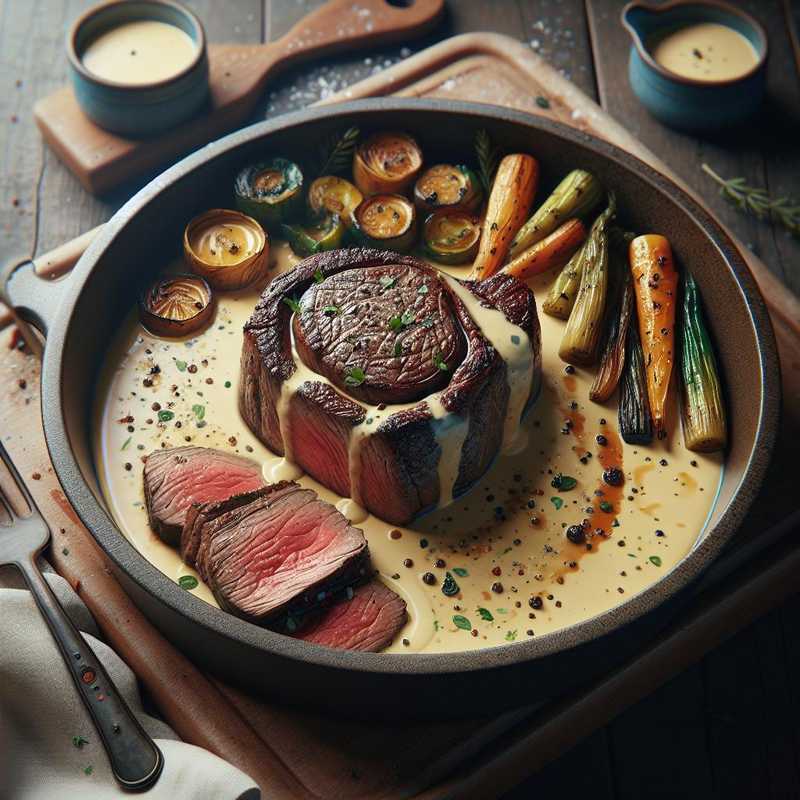Chateaubriand with Italian Béarnaise Sauce
17/11/2023Chateaubriand is a classic dish of French cuisine, but I’ll suggest a small Italian variation for the béarnaise sauce, perhaps using aromas typical of our territory.
Ingredients for Chateaubriand:
- 600g of beef fillet (for two people)
- Extra virgin olive oil
- Salt and pepper to taste
- Sprigs of fresh rosemary and thyme (for the Italian variation)
Preparation
- Preheat the oven to 200°C.
- Massage the fillet with extra virgin olive oil, salt, and pepper.
- In a very hot pan, sear the fillet on all sides to seal in the juices.
- Transfer the fillet to an oven tray, add rosemary and thyme to the meat for an Italian scent, and cook in the oven for about 15-20 minutes for a rare to medium-rare doneness, or as desired.
- Let the meat rest for a few minutes before slicing.
Ingredients for the Italian Béarnaise sauce:
- 3 egg yolks
- 250g of clarified butter
- 1 tablespoon of cold water
- 1 tablespoon of white wine vinegar
- 2 tablespoons of finely chopped shallot
- 1 tablespoon of chopped chives (for an Italian touch)
- Salt and pepper to taste
Preparation
- In a small pot, reduce the vinegar with the shallots over low heat until you have about one tablespoon of liquid. Filter and let cool.
- In a heat-resistant bowl, whisk the egg yolks with cold water, then place the bowl over a double boiler with simmering, but not boiling, water.
- Add the reduced vinegar liquid and continue to whisk until a creamy consistency is achieved.
- Add the clarified butter very slowly, continuously beating until the sauce thickens.
- Remove from the heat, add chives, salt, and pepper. If the béarnaise sauce becomes too thick, you can add a bit of hot water to reach the desired consistency.
Serve the sliced Chateaubriand topped with the Italian béarnaise sauce, perhaps accompanied by a side of sautéed seasonal vegetables.
Curiosity
The Chateaubriand takes its name from François-René de Chateaubriand, a French writer of the 19th century, but the exact origin and how the recipe has evolved remain a subject of debate among culinary historians. The béarnaise sauce, on the other hand, is a classic hot-emulsified sauce of French cuisine, which owes its name to the Béarn region, although it was actually created in Paris.
